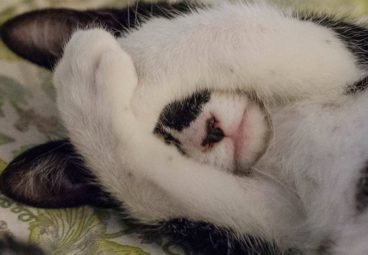Palo Alto () is a charter city located in the northwestern corner of Santa Clara County, California, United States, in the San Francisco Bay Area. Palo Alto means
tall stick in Spanish; the city is named after a coastal redwood tree called El Palo Alto.
The city was established by Leland Stanford Sr. when he founded Stanford University, following the death of his son, Leland Stanford Jr. Palo Alto includes portions of Stanford University and shares its borders with East Palo Alto, Mountain View, Los Altos, Los Altos Hills, Stanford, Portola Valley, and Menlo Park. As of the 2010 census, the city’s total resident population is 64,403. Palo Alto is one of the most expensive cities in the United States to live in, and its residents are among the highest educated in the country.
As one of the principal cities of Silicon Valley, Palo Alto is headquarters to a number of high-technology companies, including Hewlett-Packard (HP), Space Systems/Loral, VMware, Tesla, Ford Research and Innovation Center, PARC, IDEO, Skype, Houzz, and Lockheed Martin Advanced Technology Center. Palo Alto has also served as an incubator and was headquarters to several other prominent high-technology companies such as Apple, Google, Facebook, Logitech, Intuit, Pinterest, and PayPal.
History
Prior to the arrival of Europeans, the Ohlone lived on the San Francisco peninsula; in particular, the Puichon Ohlone lived in the Palo Alto area. The area of modern Palo Alto was first recorded by the 1769 party of Gaspar de Portolá, a 63-man, 200-horse expedition from San Diego to Monterey. The group overshot Monterey in the fog and when they reached modern-day Pacifica, ascended Sweeney Ridge and saw the San Francisco Bay. Portolá descended from Sweeney Ridge southeast down San Andreas Creek to Laguna Creek (now Crystal Springs Reservoir), thence to the San Francisquito Creek watershed, ultimately camping from November 6–11, 1769, by a tall redwood later to be known as El Palo Alto. Thinking the bay was too wide to cross, the group retraced their journey to Monterey, and never became aware of the Golden Gate entrance to the Bay.[citation needed]
In 1777, Father Junipero Serra established the Mission Santa Clara de Asis, whose northern boundary was San Francisquito Creek and whose lands included modern Palo Alto. The area was under the control of the viceroy of Mexico and ultimately under the control of Spain. On November 29, 1777, Pueblo de San Jose de Guadalupe (now the city of San Jose a few miles to the south of what was to be Palo Alto) was established by order of the viceroy despite the displeasure of the local mission. The Mexican War of Independence ending in 1821 led to Mexico becoming an independent country, though San Jose did not recognize rule by the new Mexico until May 10, 1825. Mexico proceeded to sell off or grant much of the mission land.
During the Mexican–American War, the United States seized Alta California in 1846; however, this was not legalized until the Treaty of Guadalupe Hidalgo was signed on July 4, 1848. Mexican citizens in the area could choose to become United States citizens and their land grants were to be recognized if they chose to do so (though many legal disputes arose over this).
The land grant, Rancho Rinconada del Arroyo de San Francisquito, of about 2,230-acre (9.0 km2) on the lower reaches of San Francisquito Creek (i.e., parts of modern Menlo Park and northern Palo Alto) was given to Maria Antonia Mesa in 1841. She and her husband Rafael Soto (who had died in 1839) had settled in 1835 near present-day Newell and Middlefield roads and sold supplies. In 1839, their daughter María Luisa Soto (1817–1883) married John Coppinger, who was to be, in 1841, the grantee of Rancho Cañada de Raymundo (in modern San Mateo county). Upon Coppinger’s death in 1847, Maria inherited it and later married a visiting boat captain, John Greer. Greer owned a home on the site that is now Town & Country Village on Embarcadero and El Camino Real. Greer Avenue and Court are named for him.
To the south of the Sotos, the brothers Secundino and Teodoro Robles in 1849 bought Rancho Rincon de San Francisquito from José Peña, the 1841 grantee. The grant covered the area south of Rancho Rinconada del Arroyo de San Francisquito to more or less present-day Mountain View. The grant was bounded on the south by Mariano Castro’s Rancho Pastoria de las Borregas grant across San Antonio Road. This later became the Robles Rancho, which constitutes about 80% of Palo Alto and Stanford University today. In 1863, it was whittled down in the courts to 6,981 acres (28.25 km2). Stories say the grand hacienda was built on the former meager adobe of José Peña near Ferne off San Antonio Road, midway between Middlefield and Alma Street. Their hacienda hosted fiestas and bull fights. It was ruined in the 1906 earthquake and its lumber was used to build a large barn nearby, which was said to have lingered until the early 1950s. On April 10, 1853, 250 acres (1.0 km2), comprising the present-day Barron Park, Matadero Creek and Stanford Business Park, was sold for $2,000 to Elisha Oscar Crosby, who called his new property Mayfield Farm. The name of Mayfield was later attached to the community that started nearby. On September 23, 1856, the Crosby land was transferred to Sarah Wallis to satisfy a debt he owed her. In 1880, Secundino Robles, father to twenty-nine children, still lived just south of Palo Alto, near the location of the present-day San Antonio Shopping Center in Mountain View.
Many of the Spanish names in the Palo Alto area represent the local heritage, descriptive terms, and former residents. Pena Court, Miranda Avenue, which was essentially Foothill Expressway, was the married name of Juana Briones and the name occurs in Courts and Avenues and other street names in Palo Alto and Mountain View in the quadrant where she owned vast areas between Stanford University, Grant Road in Mountain View and west of El Camino Real. Yerba Buena was to her credit. Rinconada was the major Mexican land grant name.
The township of Mayfield was formed in 1855, around the site of a stagecoach stop and saloon known as “Uncle Jim’s Cabin” near the intersection of El Camino Real and today’s California Avenue in what is now southern Palo Alto. In October 1863 the San Francisco to San Jose railroad had been built as far as Mayfield and service started between San Francisco and Mayfield (the station is now California Avenue); train service all the way to San Jose started in January 1864. El Camino became Main Street; the northeast-southwest cross streets were named for Civil War heroes, with California Avenue originally being Lincoln Street. The town had its own newspaper by 1869 (the Mayfield Enterprise, in English and Spanish), incorporated in 1903, and had breweries and a cannery.
In 1875, French financier Jean Baptiste Paulin Caperon, better known as Peter Coutts, purchased land in Mayfield and four other parcels around three sides of today’s College Terrace – more than a thousand acres extending from today’s Page Mill Road to Serra Street and from El Camino Real to the foothills. Coutts named his property Ayrshire Farm. His fanciful 50-foot-tall brick tower near Matadero Creek likely marked the south corner of his property. Leland Stanford started buying land in the area in 1876 for a horse farm, called the Palo Alto Stock Farm. Stanford bought Ayrshire Farm in 1882. In 1891 he and his wife, Jane, founded Stanford University, dedicated to their son Leland Stanford Jr., who had died of typhoid fever at age 15 in 1884. In 1886, he proposed founding it in Mayfield. However, he had one condition: alcohol had to be banned from the town. Known for its 13 rowdy saloons, Mayfield rejected his request. This led him to drive the formation of a new temperance town with the help of his friend Timothy Hopkins of the Southern Pacific Railroad, who in 1887 bought 740 acres (3.0 km2) of private land for the new townsite. This Hopkins Tract, bounded by El Camino Real, San Francisquito Creek, Boyce, Channing, Melville, and Hopkins Avenues, and Embarcadero Road, was proclaimed a local Heritage District during Palo Alto’s centennial in 1994. Stanford set up his university, Stanford University, and a train stop (on University Avenue) by his new town. This new community was initially called University Park (the name “Palo Alto” at that time was attached to what is now College Terrace), but was incorporated in 1894 with the name Palo Alto. With Stanford’s support, Palo Alto grew to the size of Mayfield. After long-running strife in Mayfield and a Mayfield ordinance banning saloons that took effect in January 1905, on July 2, 1925, Palo Alto voters approved the annexation of Mayfield and the two communities were officially consolidated on July 6, 1925. As a result Palo Alto has two downtown areas: one along University Avenue and one along California Avenue.
The Mayfield News wrote its own obituary four days later:
Palo Alto continued to annex more land, including the Stanford Shopping Center area in 1953. Stanford Research Park,
Embarcadero Road northeast of Bayshore, and the West Bayshore/San Antonio Road area were also annexed during the 1950s. Large amounts of land west of Foothill Expressway were annexed between 1959 and 1968; this is mostly undeveloped and includes Foothills Park and Arastradero Preserve. The last major annexations were of Barron Park in 1975 and, in 1979, a large area of marshlands bordering the bay.
Many of Stanford University’s first faculty members settled in the Professorville neighborhood of Palo Alto. Professorville, now a registered national historic district, is bounded by Kingsley, Lincoln, and Addison Avenues and the cross streets of Ramona, Bryant, and Waverley. The district includes a large number of well-preserved residences dating from the 1890s, including 833 Kingsley, 345 Lincoln, and 450 Kingsley. 1044 Bryant was the home of Russell Varian, co-inventor of the Klystron tube. The Federal Telegraph laboratory site, situated at 218 Channing, is a California Historical Landmark recognizing Lee de Forest’s 1911 invention of the vacuum tube and electronic oscillator at that location. While not open to the public, the garage that housed the launch of Hewlett Packard is located at 367 Addison Avenue. Hewlett Packard recently restored the house and garage. A second historic district on Ramona Street can be found downtown between University and Hamilton Avenues. The Palo Alto Chinese School is the oldest in the entire Bay Area. It is also home to the second oldest opera company in California, the West Bay Opera.
Palo Alto, California is also home to a long-standing baseball tradition: The Palo Alto Oaks. The Palo Alto Oaks are a collegiate, summer baseball club that has been in the Bay Area since 1950, 8 years longer than the San Francisco Giants. The Oaks were originally managed by Tony Makjavich for 49 years. The Oaks were going to fold before the summer 2016 season but were taken on by Daniel Palladino and Whaylan Price, Bay Area baseball coaches, who did not want to see the team die. The Oaks have a rich history within the Palo Alto community.





